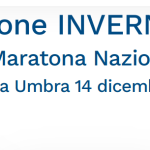Gone are the days when a firewall and a locked office defined your entire security strategy. Today’s organizations are everywhere—employees work remotely, and sensitive apps live in both public and private clouds. The old network perimeter barely exists.
This new world brings fresh security challenges. We can no longer trust anyone or anything simply because they’re “inside” the network. Instead, Zero Trust demands we verify every user, every device, and every connection—constantly.
That’s where FortiSASE steps in. As Fortinet’s Secure Access Service Edge (SASE) platform, it turns Zero Trust from an idea into practical, cloud-delivered protection. FortiSASE enforces security everywhere your people and data go, safeguarding your modern, distributed workforce. In Malaysia, Spectrum Edge works as a trusted distributor, helping businesses adopt FortiSASE to strengthen their security infrastructures and stay ahead of evolving threats.
The Zero Trust Mandate: Never Trust, Always Verify
The Zero Trust security model is built on a simple but powerful premise: assume that no user or device, whether inside or outside the traditional network, should be trusted by default. Instead of granting broad access once a user connects to the network (as with a traditional VPN), Zero Trust demands that identity and context be verified for every single access request.
This model addresses the inherent weaknesses of perimeter-based security. In a traditional setup, once an attacker gains a foothold inside the network—perhaps through a compromised user account—they can often move laterally with little resistance to access sensitive data. Zero Trust effectively eliminates this internal trust, creating micro-perimeters around individual applications and data. Access is granted on a least-privilege basis, meaning users only get access to the specific resources they need to do their jobs, and nothing more.
How FortiSASE Brings Zero Trust to Life
FortiSASE is not just a product; it is a framework that operationalises the Zero Trust philosophy. It converges cloud-delivered security and networking into a single service, applying consistent policies across all edges. This is achieved through three core capabilities that directly map to the principles of Zero Trust.
1. Secure Private Access with Zero Trust Network Access (ZTNA)
The most direct application of Zero Trust within FortiSASE is its Zero Trust Network Access (ZTNA) functionality. ZTNA is the modern replacement for traditional VPN, and it fundamentally changes how users connect to applications hosted in private data centres or clouds.
Instead of creating a wide-open tunnel into the corporate network, ZTNA works by making applications invisible to the public internet. A lightweight agent on the user’s device (FortiClient) establishes a secure connection to the nearest FortiSASE Point of Presence (PoP). When the user attempts to access a private application, FortiSASE first verifies their identity and the security posture of their device. Only after this verification is a secure, encrypted, one-to-one connection established between the user and that specific application.
This approach offers several Zero Trust benefits:
- Reduced Attack Surface: Since applications are not exposed to the internet, they cannot be discovered or targeted by attackers.
- Least-Privilege Access: Users are only granted access to the applications they are explicitly authorised to use, preventing lateral movement within the network.
- Improved User Experience: ZTNA provides faster and more seamless access compared to clunky, backhauled VPN connections, as traffic is routed through the globally distributed FortiSASE PoPs.
2. Secure Internet Access (SIA)
A Zero Trust strategy must extend to every connection, including a user’s access to the public internet. Remote workers who connect directly to the internet without protection create a significant security blind spot. FortiSASE’s Secure Internet Access (SIA) capability ensures that all users, no matter where they are, are protected by a consistent set of enterprise-grade security policies.
All internet-bound traffic from a user’s device is automatically steered to the nearest FortiSASE PoP for full security inspection. This includes:
- Secure Web Gateway (SWG): Filters web traffic to block malicious websites, phishing attacks, and inappropriate content.
- Firewall-as-a-Service (FWaaS): Provides robust NGFW capabilities, including deep packet inspection and application control, delivered from the cloud.
- Intrusion Prevention (IPS): Protects against known exploits and network-based threats.
By enforcing these policies in the cloud, FortiSASE ensures that the organisation’s security posture remains strong and consistent, regardless of how or where employees connect. It treats every internet connection as untrusted and subjects it to rigorous inspection.
3. Secure SaaS Access with CASB
The proliferation of Software-as-a-Service (SaaS) applications like Microsoft 365, Google Workspace, and Salesforce presents another challenge for Zero Trust. How do you protect data that you don’t control on a network you don’t own?
FortiSASE addresses this through its integrated Cloud Access Security Broker (CASB) functionality. It applies Zero Trust principles to SaaS usage by providing deep visibility and granular control over these applications.
- Inline-CASB: Inspects traffic to and from SaaS applications in real time, allowing organisations to enforce policies, prevent data leakage, and identify “Shadow IT” (the use of unapproved applications).
- API-based CASB: Integrates directly with sanctioned SaaS applications to scan for sensitive data, detect misconfigurations, and ensure compliance with regulations like GDPR.
This ensures that even when data moves to the cloud, the principles of verification and least-privilege access are maintained, protecting the organisation from data breaches and compliance failures.
Building a Security-Driven Culture Beyond the Perimeter
Implementing a true Zero Trust model is a journey, not a destination. It requires a shift in both technology and mindset. The traditional approach of trusting users once they are “on the network” must be replaced with a culture of continuous verification.
FortiSASE provides the technological foundation for this cultural shift. By unifying ZTNA, SIA, and CASB into a single, cloud-delivered platform, it simplifies the adoption of Zero Trust principles. It removes the complexity of stitching together multiple point products and provides a single console for enforcing consistent security policies across the entire digital landscape—from the data centre to the cloud and to the edge.
For IT decision-makers and security professionals tasked with protecting a modern, hybrid workforce, this is invaluable. FortiSASE offers a practical and scalable way to move beyond the obsolete perimeter and build a more resilient security architecture—one where trust is never assumed and security is always enforced.











